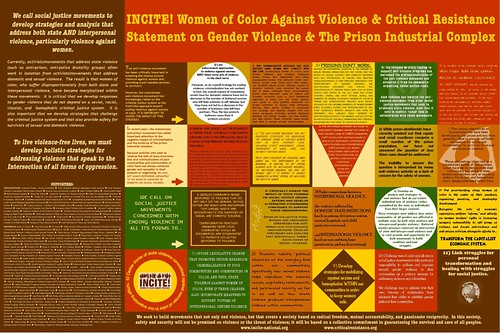The word on vets in prison is that a lot of them are dying these days. 65% of veterans in prison are over 55 years old. A good many of them are Vietnam War vets dying from the complications of Hepatitis C. Yeah, being a Vietnam era vet is a risk factor for the disease, though it's likely due to the high incidence of IV drug use in particular among vets of that generation.
Interestingly, there doesn't appear to be a higher incidence of drug use among vets in prison than the rest of the prison population. That may not be saying much, though. Most people in prison are there for drug-related convictions.
The news on what our vets are in prison for is not good. Most are in for violent or sexual offenses. It's possible that veterans with lesser offenses are just being cut more slack in sentencing, concentrating the violent offenders among them in prison. The verdict on how PTSD affects this population is still out, but there's a clear correlation between military service and violent crime.
The US DOJ is overdue for a new statistical report and analysis. We've had over nine years of war, with soldiers going out on multiple deployments, since the last big study they put out in 2000. There's a particular need for an examination of women veterans in prison. Here's the 2007 press release on the DOJ's updated figures, nonetheless. Keep in mind it was from statistics gathered in 2004.
Here's the link to the UK's Howard League recent study on veterans in US prisons. It's also very informative. We really should be studying this more ourselves, though.
Remember our Buddies in Prison.
Seen over the Loop 202; Phoenix. Veterans' Day, 2010.
---------------------------------------
| Bureau of Justice Statistics | ||
| SUNDAY, APRIL 29, 2007 | Contact: Stu Smith 202/307-0784 | |
| www.ojp.usdoj.gov/bjs | After hours: 301-983-9354 |
MALE VETERANS LESS THAN HALF AS LIKELY AS MALE NON-VETERANS TO BE IN PRISON IN 2004
Veterans Older, Better Educated Than Other State and Federal Prisoners
WASHINGTON—There were an estimated 140,000 veterans held in state and federal prisons in 2004, the Justice Department’s Bureau of Justice Statistics (BJS) announced today. State prisons held 127,500 of these veterans, and federal prisons held 12,500.Almost all veterans in prison were male (99 percent). Among adult males in the U.S. population in 2004, veterans were half as likely as non-veterans to be in prison (630 prisoners per 100,000 veterans, compared to 1,390 prisoners per 100,000 non-veteran U.S. residents). The difference is largely explained by age. Two-thirds of male veterans in the U.S. population were at least 55 years old, compared to 17 percent of non-veteran men. The incarceration rate of these older male veterans (182 per 100,000) was far lower than for those under age 55 (1,483 per 100,000).
In 2004, the percentage of state prisoners who reported prior service in the U.S. Armed Forces (10 percent) was half of the level reported in 1986 (20 percent). BJS began surveying federal prisoners in 1991, and federal inmates showed a similar decline in reporting military service – from 20 percent in 1991 to 10 percent in 2004.
Despite the declining percentages of prisoners with prior military service, the estimated number of veterans in state and federal prison increased by more than 50,000 between 1985 and 2000. This increase coincided with a rapid growth in total prison populations. Since 2000, the number of veterans in prison has fallen 13,100 or 9 percent.
The average length of military service of veterans in prison was about four years, and six in 10 received an honorable discharge. The majority of veterans in state (54 percent) and federal (64 percent) prisons served during a wartime period, but a much lower percentage (20 percent of veterans in state prisons, 26 percent of federal) reported seeing combat. Vietnam-era veterans (36 percent) were the largest group of wartime service veterans in state prisons, followed by veterans of the 1990-91 Persian Gulf War (14 percent). Only 4 percent of the veterans in state prison had served since operations began in Afghanistan and Iraq.
Over half of veterans (57 percent) were serving time for violent offenses, compared to 47 percent of non-veterans. In particular, veterans (23 percent) were twice as likely as non-veterans (9 percent) to have been sentenced for sexual assaults, including rape. Among violent offenders, a higher percentage of veterans reported victimizing females (60 percent for veterans compared to 41 percent for non-veterans) and minors (40 percent for veterans compared to 24 percent for non-veterans).
Veterans were much older than other inmates; the median age of veterans in State prison was 45, compared to 33 for non-veterans. Veterans in state prisons were also more likely to be white (54 percent) than non-veterans in state prisons (33 percent). Veterans were much better educated than other state prisoners. Nearly all veterans (91 percent) reported at least a high school diploma or GED, compared to 60 percent of non-veterans in state prisons. College attendance was three times higher among veterans in state prison as well (33 percent compared to 10 percent of non-veterans).
Veterans were less likely to report drug use in the month before their offense (42 percent) than other state prisoners (58 percent). Veteran status was not related to inmate reports of alcohol dependence and abuse.
The report, Veterans in State and Federal Prison, 2004 (NCJ-217199), was written by BJS statistician Margaret E. Noonan and BJS policy analyst Christopher J. Mumola. Following publication it can be found at http://bjs.ojp.usdoj.gov/index.cfm?ty=pbdetail&iid=808.
For additional information about the Bureau of Justice Statistics please visit the BJS Web site at http://bjs.ojp.usdoj.gov/.
The Office of Justice Programs (OJP), headed by Assistant Attorney General Regina B. Schofield, provides federal leadership in developing the nation’s capacity to prevent and control crime, administer justice and assist victims. OJP has five component bureaus: the Bureau of Justice Assistance; the Bureau of Justice Statistics; the National Institute of Justice; the Office of Juvenile Justice and Delinquency Prevention; and the Office for Victims of Crime. Additionally, OJP has two program offices: the Community Capacity Development Office, which incorporates the Weed and Seed strategy and OJP’s American Indian and Alaska Native Affairs Desk and the Sex Offender Sentencing, Monitoring, Apprehending, Registering and Tracking (SMART) Office. More information can be found at http://www.ojp.usdoj.gov.
























No comments:
Post a Comment